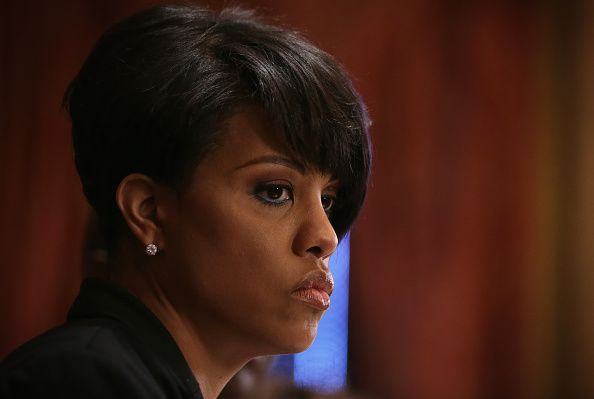Baltimore Mayor Praises Peaceful Protests Over Man's Death

(Reuters) - The mayor of Baltimore praised the citizens who organized five days of peaceful protests over the death of a black man in police custody and vowed after meeting with clergy leaders on Friday to find answers in the case.
The largely black city has seen daily marches and demonstrations since Sunday, when 25-year-old Freddie Gray died of a neck injury sustained when police arrested him a week earlier.
The incident was the latest in the string of deaths of black men at the hands of police, which have prompted waves of protest across the United States since the deaths last year of Michael Brown in Ferguson, Missouri, and Eric Garner in New York.
Unlike in Ferguson, where weeks of peaceful protests were punctuated by several nights of rioting, arson and looting, the protests in Baltimore have seen only a handful of arrests and no major violence.
This city of 620,000 people will face a major demonstration on Saturday, with police estimating more than 1,000 protesters will gather for a march from the site of Gray's arrest to City Hall.
"I want to commend the members of our community for their commitment for peaceful and respectful protests during this process," Mayor Stephanie Rawlings-Blake said after meeting with local clergy. "Our commitment is clear. They demand answers."
Six Baltimore officers have been suspended with pay over the incident.
The city's police commissioner, Anthony Batts, said the department would be releasing video on Friday taken around the time of Gray's arrest and that it had received a "preliminary verbal report" from the medical examiner on Gray. He did not disclose the results of that report.
Batts, who like Rawlings-Blake is black, added that the investigation was focusing on the multiple stops that the police vehicle carrying Gray made after arresting him.
"If someone harmed Freddie Gray, we're going to have to prosecute that person," he told a news conference. "I'm trying to answer your questions as best we can without jeopardizing our case."
NON-CONFRONTATIONAL POLICING
Unlike in Ferguson, where police quickly turned to paramilitary tactics, donning riot helmets and vests and rolling out armored vehicles to confront crowds of protesters, Baltimore police have taken a less confrontational approach, remaining in patrol uniforms and giving protesters a wide berth.
That low-key response has not been entirely hands-off, though. When a skirmish developed between a handful of officers and demonstrators in west Baltimore on Thursday night, scores of police quickly descended on the scene, cordoning off the area and arresting two people.
Police have also maintained barricades preventing protesters from approaching the domed City Hall, and the station house where Gray was taken has been fenced off by barriers.
Ken Jones, a police spokesman, said Baltimore police had taken lessons from the Ferguson unrest.
"We don't want to come off heavy-handed, yet," Jones said. "I don't think anyone is going to cause a riot."
Sharon Black, a veteran protest organizer with the leftist People's Power Assembly in Baltimore, said she did not regard the police's posture as low-key, calling the barricades around City Hall and the police station heavy-handed.
"I think the jury's out on that right now," she said.
But Scott Bolden, a Washington lawyer and former New York prosecutor with expertise in cases involving police, said U.S. police generally had seen the value of officers remaining non-confrontational in the face of protests.
Police forces across the United States, he said, have "learned how not to handle these issues, based on what we saw in Ferguson."
Police said Gray fled when officers approached, and they found a switchblade knife in his pocket. He was put in a police van to be taken to a station.
When Gray was taken out, he was unresponsive and taken to a hospital. Police have said Gray was not properly buckled into a seat belt inside the van.
Police have said they will conclude their investigation by May 1 and turn results over to state prosecutors, followed by an independent review. The U.S. Department of Justice is conducting a separate probe.
© Copyright IBTimes 2024. All rights reserved.





















